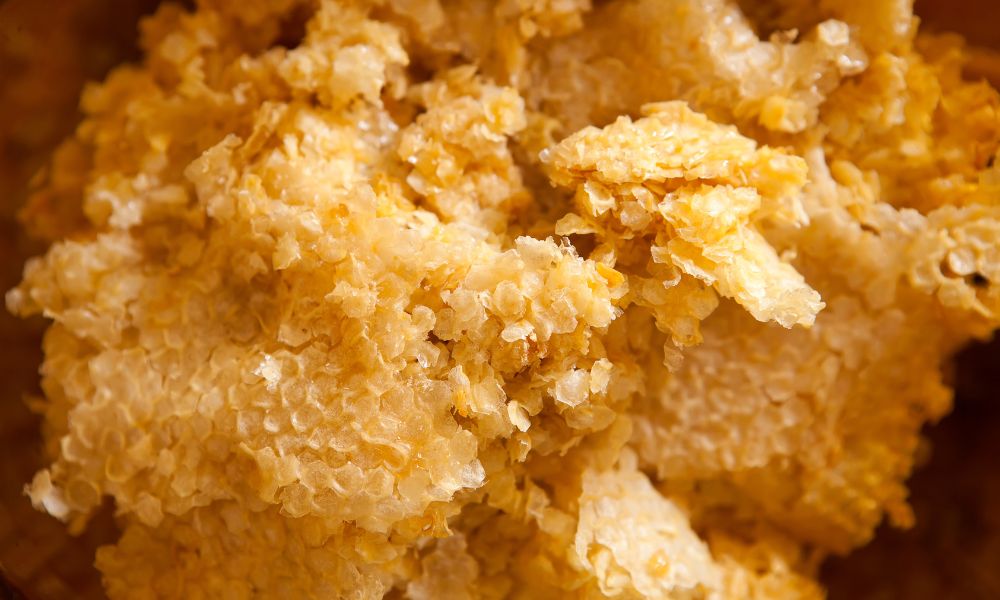
The Differences Between Beeswax and Honey
Share
We’re all familiar with the fact that bees produce honey, but they’re also responsible for creating other products. Beeswax is a byproduct of honey production and is just as popular as its liquid gold counterpart. However, despite coming from the same source, these substances have their uses and chemical makeups. Here, we’ll provide an overview of the differences between beeswax and honey.
The Process of Production
Beeswax and honey are both products of a colony’s intensive labor and resourcefulness. Honey is the delectable reward of bees’ foraging efforts. This sweet nectar comes from the flower pollen transformed within the bee’s abdomen into the honey we know. The process involves regurgitation and dehydration, resulting in a product that’s delicious and boasts a long shelf-life.
In contrast, beeswax is a structural component of the hive, formed in the wax glands of worker bees. It’s secreted in tiny scales that become the building blocks for honeycomb cells. The wax, initially transparent, becomes increasingly opaque as the bees work long-chain alcohols into it. It’s a gradual process that eventually yields the familiar and pale solid beeswax.
Chemical Composition and Uses
The chemical composition of beeswax and honey represents their specific roles in the hive. Beeswax is a complex mixture of hydrocarbons, fatty acids, and esters, while honey is predominantly a mixture of glucose and fructose with traces of proteins and amino acids.
Beeswax is a great ingredient in cosmetics, such as lip balms and lotions, due to its emollient properties. You can also find it in natural candle-making processes and as a component in wood and leather working for its conditioning effects.
Honey, on the other hand, is most famously known as a sweetener, but its uses extend far beyond the culinary realm. Many celebrate it for its antifungal and antibacterial properties and, therefore, is a favorite in traditional medicine—a soothing remedy for a sore throat or a natural energy booster.
Health Benefits
There is a growing body of evidence supporting the holistic health benefits of both beeswax and honey. Beeswax, when unaltered, can have a calming effect on skin conditions and may offer anti-inflammatory properties. As mentioned, honey has a reputation for its antimicrobial abilities and is a possible aid for wound healing due to its ability to reduce infection and inflammation.
Differences Between Beeswax and Honey
The differences between beeswax and honey products are abundant, from their physical properties to their applications. Beeswax, or honeycomb, is solid at room temperature and a sweet and chewy snack in its raw state, while honey is naturally a liquid. Honey can also be a great treat on its own, but we primarily add it to meals and drinks as a sweetener. Both are very versatile and make a great component for certain crafts, dining, and household needs.
Beeswax and honey are just two examples of the many wonders concealed within a hive. These gifts underscore the necessity of preservation and understanding the intricate bonds between humans and the natural world, whether used for health, art, or culinary delights. At Bell Honey, we have a strong relationship with the bees in our care, and we ensure only the best possible conditions for crafting the tastiest products. Our jars of raw honey with honeycomb are second to none, and we’re confident that you’ll love every bite as much as we do!
